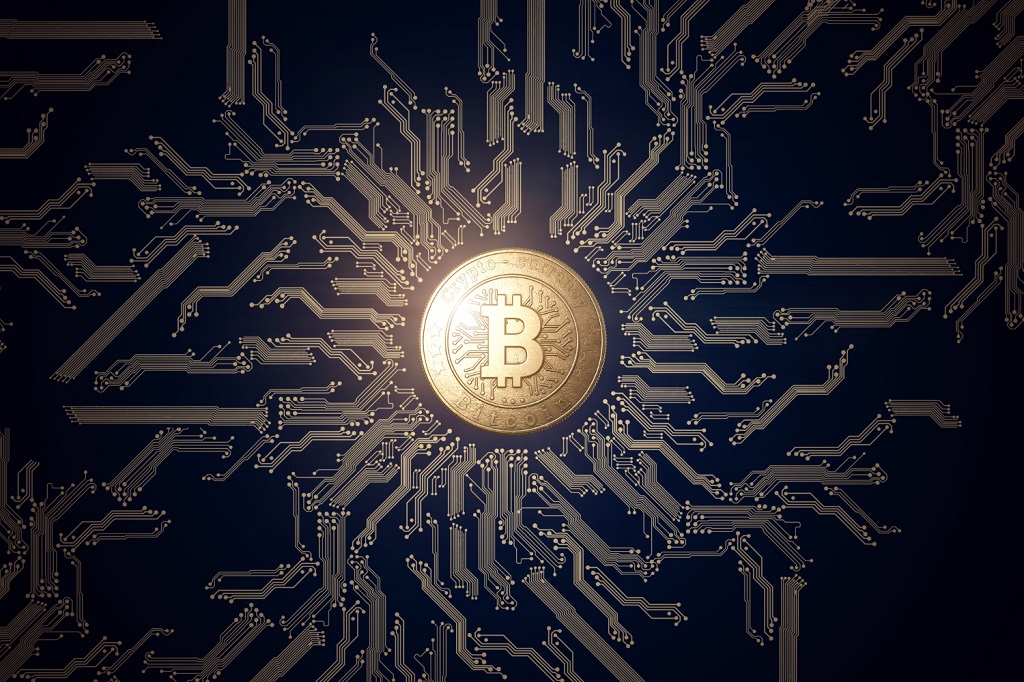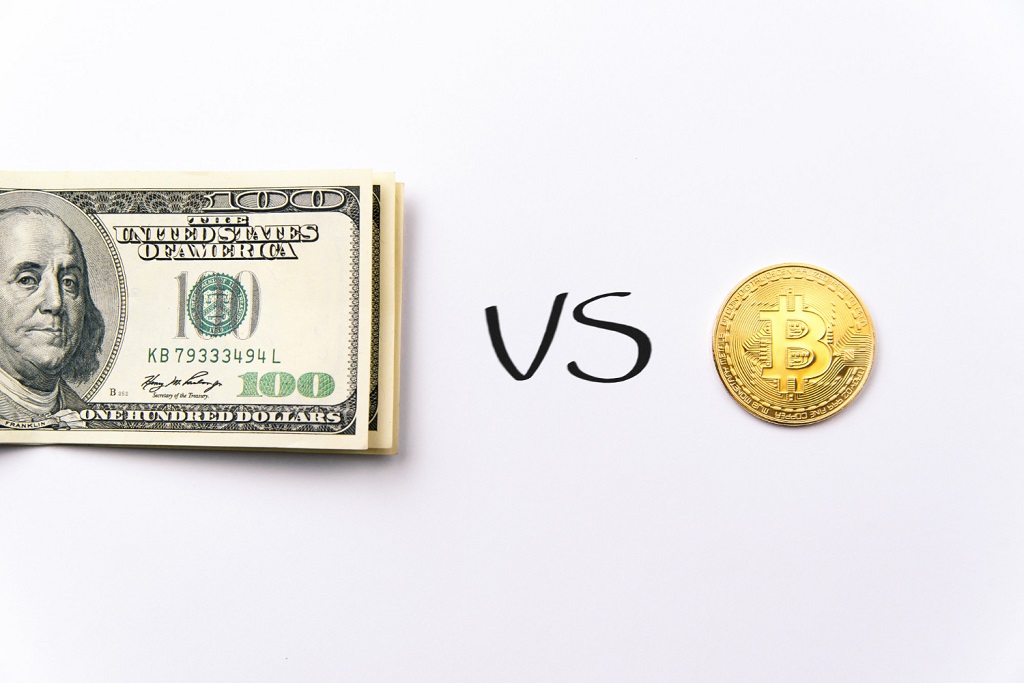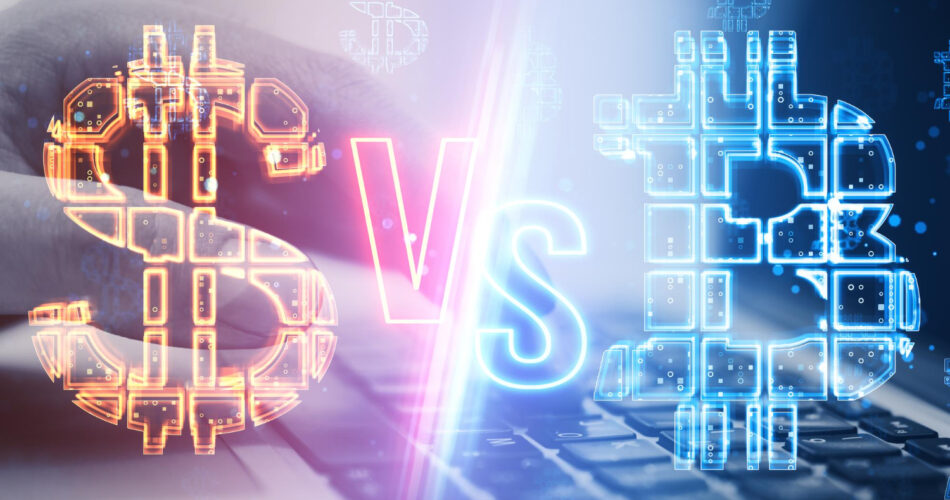In the world of finance, the debate between fiat currency and cryptocurrency is heating up. Understanding the difference between these two forms of money is crucial in today’s digital age. Let’s delve into the world of traditional and digital currencies, their pros and cons, and their impact on our future.
Table of Contents
What is Fiat Currency?
Definition and Explanation of Fiat Currency
Fiat currency is a type of money that a government has declared to be legal tender. It’s not backed by a physical commodity like gold or silver; instead, the value of fiat money is derived from the relationship between supply and demand.
History and Evolution of Fiat Currency
The concept of fiat currency dates back to ancient China, but it became more prevalent in the 20th century. The U.S. dollar, for instance, became a fiat currency in 1971 when the U.S. stopped allowing the conversion of dollars to gold.
How Fiat Currency Works
Fiat currencies are regulated by central banks, which can adjust monetary policies and influence the economy. They can control inflation by changing interest rates or the amount of money in circulation.
Pros and Cons of Fiat Currency
| Pros of Fiat Currency | Cons of Fiat Currency |
|---|---|
| Widely Accepted: Fiat currency is recognized and accepted globally, making it convenient for international trade and travel. | Inflation Risk: Since fiat currency is not backed by a physical commodity, it’s susceptible to inflation. If a government prints too much money, the value of the currency can decrease. |
| Stability: Compared to cryptocurrencies, fiat currencies are relatively stable. This stability makes them suitable for everyday transactions. | Dependent on Government and Economy: The value of fiat currency is tied to the stability of the government and the health of its economy. Political instability or economic downturn can devalue the currency. |
| Regulation: Fiat currencies are regulated by central banks, which can adjust monetary policies to control inflation, stabilize the economy, and maintain public confidence. | Potential for Mismanagement: Central banks control the supply of money, which can lead to mismanagement. For example, excessive printing of money can lead to hyperinflation. |
| Physical Form: Fiat currency exists in a physical form (coins, notes), which can be convenient for those who prefer or need to use cash. | Counterfeit Risk: Since fiat currency has a physical form, it’s susceptible to counterfeiting. |
| Ease of Use: Most people are familiar with how to use fiat currency, making it accessible and easy to use for all ages and demographics. | Transaction and Maintenance Fees: Banks and financial institutions often charge fees for transactions, account maintenance, and other services related to fiat currency. |
What is Cryptocurrency?

Definition and Explanation of Cryptocurrency
Cryptocurrency is a digital or virtual form of currency that uses cryptography for security. It operates independently of a central bank and is based on blockchain technology.
History and Evolution of Cryptocurrency
Cryptocurrency came into existence in 2009 with the launch of Bitcoin. Since then, thousands of cryptocurrencies have been created, each with its unique features and uses.
How Cryptocurrency Works
Cryptocurrencies work through a technology called blockchain, which is a decentralized ledger recording all transactions across many computers.
Pros and Cons of Cryptocurrency
| Pros of Cryptocurrency | Cons of Cryptocurrency |
|---|---|
| Decentralization: Cryptocurrencies operate on a decentralized network using blockchain technology, meaning no central authority has control over them. | Volatility: Cryptocurrencies are known for their extreme volatility. Prices can skyrocket or plummet in a short period, leading to potential financial loss. |
| Security: Due to the use of cryptography in every transaction, cryptocurrencies offer a high level of security against fraud and theft. | Lack of Regulation: The lack of regulation can make cryptocurrencies a target for illegal activities, such as money laundering and tax evasion. |
| Privacy: Cryptocurrencies can provide privacy as transactions can be made anonymously. However, the level of privacy varies depending on the cryptocurrency. | Limited Acceptance: While growing, the acceptance of cryptocurrencies for everyday transactions is still limited compared to fiat currencies. |
| Speed and Cost of Transactions: Cryptocurrency transactions can be faster and cheaper, especially for cross-border transfers, as they bypass traditional banking systems. | Complexity: The technology behind cryptocurrencies can be complex and difficult for the average person to understand, which can limit its adoption. |
| Accessibility: Cryptocurrencies can be accessed and used by anyone with an internet connection, providing financial services to people without access to traditional banking systems. | Irreversible Transactions: Once a cryptocurrency transaction is made, it can’t be reversed. If a mistake is made, it can be difficult or impossible to rectify. |
| Potential for High Returns: Due to their volatility, cryptocurrencies have the potential for high returns on investment. | Risk of Loss: If your digital wallet is lost, stolen, or hacked, there is a risk of losing all your holdings with no way to recover them. |
Key Differences Between Fiat Currency vs Crypto

| Criteria | Fiat Currency | Cryptocurrency |
|---|---|---|
| Control and Regulation | Fiat currency is issued and regulated by a central authority, usually a government or central bank. | Cryptocurrency operates on decentralized systems known as blockchain, and is not controlled by any central authority. |
| Security and Privacy | Transactions with fiat currency, especially digital transactions, often require personal identification and are traceable. | Cryptocurrencies offer more privacy as transactions can be made anonymously. However, the level of privacy varies depending on the cryptocurrency. |
| Accessibility and Usability | Fiat currency is universally accepted for all types of transactions, both online and offline. | Cryptocurrency is not universally accepted and is primarily used for online transactions. However, its acceptance is growing. |
| Value and Volatility | Fiat currency is relatively stable but can be affected by inflation and economic policies. | Cryptocurrency values are highly volatile and can change rapidly in a very short time. |
| Supply | The supply of fiat currency is regulated by central banks and can be adjusted according to the needs of the economy. | The supply of most cryptocurrencies is fixed. For example, the total number of bitcoins that will ever be created is capped at 21 million. |
| Transaction Speed and Cost | Fiat currency transactions, especially international ones, can take time and often involve fees. | Cryptocurrency transactions can be faster and cheaper, especially for cross-border transfers, as they don’t have to go through banks or clearing houses. |
| Physical Form | Fiat currency exists in both physical (coins, notes) and digital forms. | Cryptocurrency is purely digital and does not have a physical form. |
| Storage | Fiat currency can be stored in physical wallets, bank accounts, and digital wallets. | Cryptocurrencies are stored in digital wallets or hardware wallets. |
| Counterfeit Risk | Fiat currency, especially physical cash, can be counterfeited. | Due to the cryptographic nature of cryptocurrencies, they are extremely difficult to counterfeit. |
This chart provides a detailed look at the differences between fiat currency and cryptocurrency. It’s important to note that the impact of these differences can vary depending on the specific fiat currency or cryptocurrency in question.
Case Studies
The impact of both fiat currency and cryptocurrency can be seen in various real-world scenarios.
Case Study 1: Bitcoin and MicroStrategy
MicroStrategy, a leading business intelligence company, has been a pioneer in adopting Bitcoin as a significant part of its treasury management strategy. In 2020, the company started investing in Bitcoin, citing its potential as a dependable store of value over traditional fiat currencies. As of July 2023, MicroStrategy owns over 100,000 Bitcoins, making it one of the largest corporate holders of Bitcoin. This move has sparked a debate among businesses about the viability of cryptocurrencies as a treasury asset.
Case Study 2: Venezuela and the Petro
In contrast to MicroStrategy’s voluntary adoption of cryptocurrency, the Venezuelan government launched its own cryptocurrency, the Petro, in 2018 as a response to a severe economic crisis and hyperinflation of its fiat currency, the Bolivar. The Petro was intended to supplement the country’s crumbling fiat currency system and circumvent international sanctions. However, the Petro has faced criticism and skepticism from the international community and has not been widely adopted.
Case Study 3: El Salvador’s Bitcoin Law
In a landmark move, El Salvador became the first country in the world to recognize Bitcoin as legal tender in September 2021. This decision was driven by a desire to boost financial inclusion, as over 70% of El Salvador’s population does not have access to traditional banking services. While the long-term impact of this move is yet to be seen, it represents a significant moment in the ongoing fiat vs. cryptocurrency debate.
These case studies illustrate the diverse ways in which both fiat currencies and cryptocurrencies are being used and the impacts they can have on businesses and economies. They highlight the ongoing evolution and experimentation in the world of finance as we navigate the digital age.
The Future of Money: Fiat or Crypto?
As we move further into the digital age, the debate between fiat currency and cryptocurrency becomes increasingly relevant. Will one replace the other, or will they find a way to coexist? Let’s explore some possibilities.
The Continued Dominance of Fiat
Fiat currency has been the backbone of our economies for centuries. Despite its drawbacks, such as susceptibility to inflation and dependence on the stability of the issuing government, it offers stability and universal acceptance that cryptocurrencies currently cannot match. Central banks around the world are also exploring the idea of Central Bank Digital Currencies (CBDCs), which could combine the benefits of both fiat and crypto.
The Rise of Cryptocurrency
Cryptocurrencies offer several advantages over traditional fiat currencies, including speed of transactions, lower transaction costs, and accessibility. They also offer a level of privacy and security that is appealing to many users. With the ongoing development of blockchain technology and increasing acceptance of cryptocurrencies, they could become a more integral part of our financial systems.
A Hybrid Future
Perhaps the most likely scenario is a hybrid future, where both fiat currencies and cryptocurrencies coexist and serve different purposes. Fiat currency might continue to be used for everyday transactions and to provide economic stability, while cryptocurrencies could be used for online transactions, international transfers, and as an alternative investment.
The Role of Regulation
The future of money will also be heavily influenced by regulation. How governments around the world decide to regulate cryptocurrencies could have a significant impact on their adoption and usability. Regulations could provide more security for cryptocurrency users, but they could also restrict the freedom and privacy that make cryptocurrencies appealing to many.
Conclusion
As we’ve explored in this article, both fiat currency and cryptocurrency have their unique strengths and weaknesses. Fiat currency, with its stability and universal acceptance, continues to play a vital role in our global economy. On the other hand, cryptocurrency, with its decentralization, privacy, and digital nature, offers innovative solutions to some of the challenges faced by traditional financial systems.
However, it’s important to remember that the world of finance is not a zero-sum game. The future might not be about one replacing the other, but rather about how these two forms of money can coexist and complement each other. As we’ve seen in the case studies, there are already instances of this hybrid approach in action.
The future of money is likely to be shaped by many factors, including technological advancements, regulatory decisions, and shifts in societal attitudes towards money and privacy. As individuals, businesses, and governments navigate this evolving landscape, it’s crucial to stay informed and adaptable.
In the end, whether it’s fiat or crypto, the goal remains the same: to facilitate exchange, store value, and provide a measure of economic value. As we move forward, it’s this fundamental understanding of what money is and what it can do that will guide us towards a future where financial systems serve the needs of all people, not just a select few.
FAQs
What is the main difference between fiat currency and cryptocurrency?
Fiat currency is government-issued and regulated, while cryptocurrency is decentralized and operates independently of a central authority.
Is cryptocurrency a good investment?
Cryptocurrency can be a high-risk, high-reward investment. It’s important to do thorough research and consider your risk tolerance before investing.
Can cryptocurrency replace fiat currency?
While it’s possible, it’s unlikely in the near future due to regulatory, technical, and acceptance hurdles.
Is fiat currency backed by anything?
Fiat currency is not backed by a physical commodity. Its value comes from the trust and confidence people have in the government issuing it.


